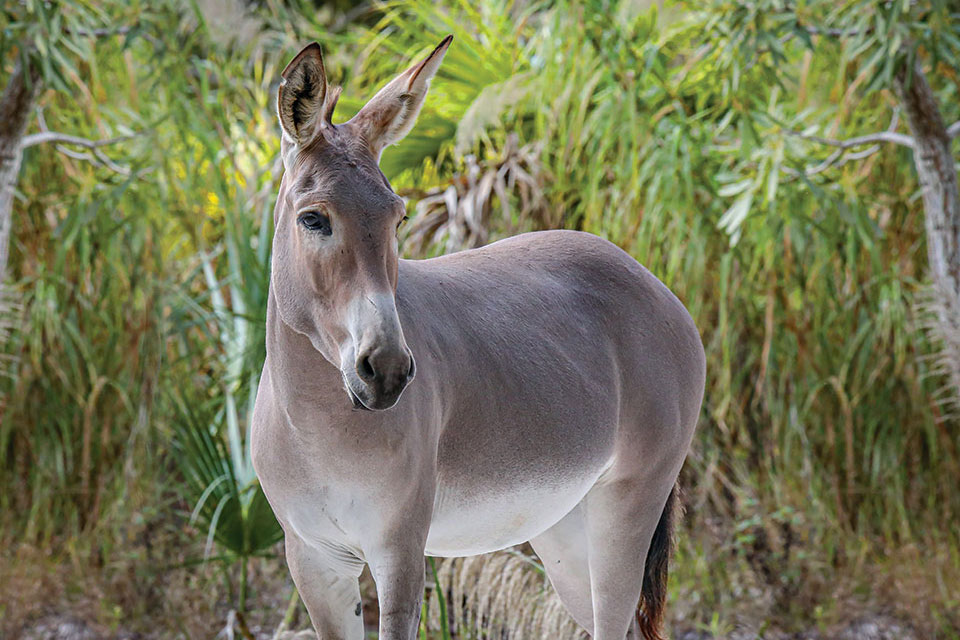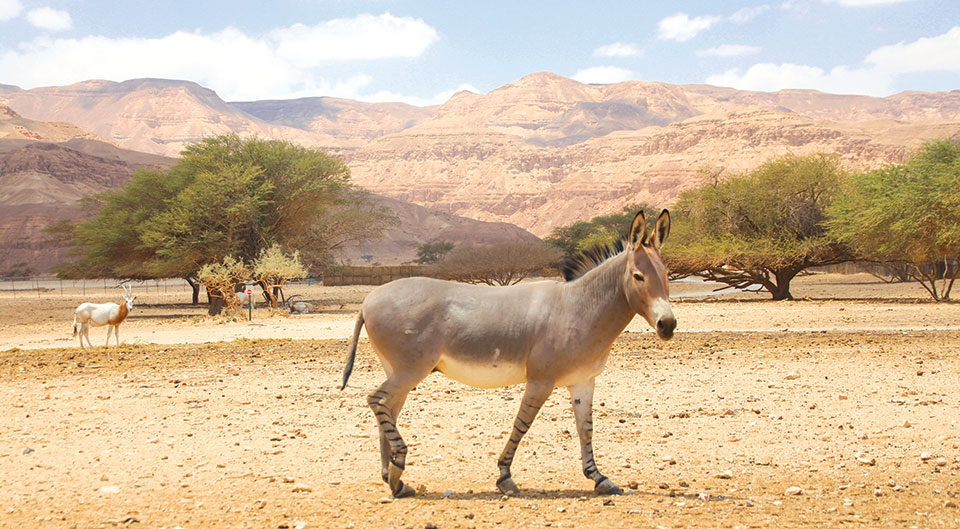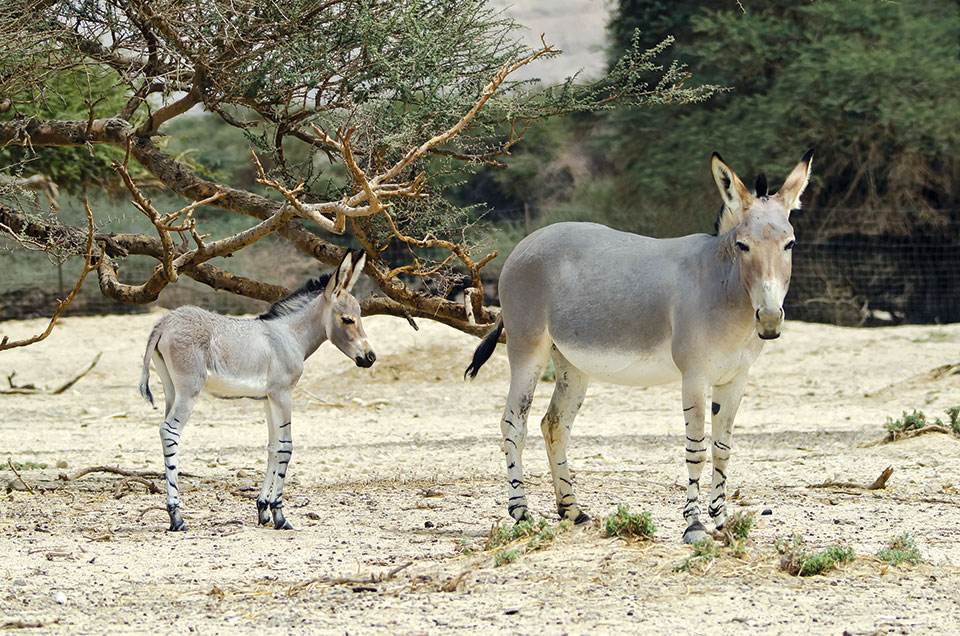
The African wild ass, or sometimes referred to as the African wild donkey, is a wild member of the horse family. This species is believed to be the ancestor of the domestic donkey, which is usually placed within the same species. Donkeys may have been first domesticated from the African wild ass as early as 4000 B.C.
They live in the deserts and other arid areas of the Horn of Africa, in the countries of Somalia, Ethiopia and Eritrea.
The historic range of the African wild ass has been greatly reduced by more than ninety percent in just the last couple of decades. They once lived in Egypt and surrounding areas, but many have now died out. Of the 570 known to be alive in the wild, around 400 live in Eritrea. In Ethiopia there are thought to be less than 160, and Somalia has only 10.
African wild asses live in extreme desert conditions where there is less than 7.8 inches of annual rainfall. African wild asses are well suited to life in a desert or semidesert environment. They have strong digestive systems which can break down desert vegetation and extract moisture from food efficiently. They can also go without water for a considerable time. Their diet consists of grasses, bark, and leaves. Despite being primarily adapted for living the desert climate, when not receiving the needed moisture from vegetation, they must drink at least once every three days. However, they can survive on a surprisingly small amount of liquid. They have been reported to drink salty or brackish water when needed to survive.

Their large ears give them an excellent sense of hearing and help in cooling. Because of the sparse vegetation in the desert, wild asses live somewhat separated from each other.
The African wild ass is primarily active in the cooler hours between late afternoon and early morning, seeking shade and shelter amongst the rocky hills during the day.
Their tendancy to live a life that is separate helps ensure all have access to available food. Although living apart, they are not unsociable and still stay in contact with others of the same species by using their extremely loud voices which can be heard for close to two miles.
The coat of the African wild ass is short just like that of a donkey but is smooth with a color range from fawn to light grey, which breaks into a white color underneath on the stomach area and inner sides of the legs. All of the creatures have at least one stripe. Stripes can be found across the shoulder or on the legs. These stripes are similar to those of a zebra. Just like a donkey, the tail is finished with brush-like ends. On the nape of the neck, there is a stiff, upright mane, the hairs of which are tipped with black. The tail is between twelve and twenty inches long.
The height is approximately 6.5 feet and 4 feet at the shoulder. The average weight of the wild ass is between 510 and 610 pounds.

Mature males defend large territories, marking them with dung heaps – an essential marker in the flat, monotonous terrain. Due to the size of these ranges, the dominant male cannot exclude other males. Rather, intruders are tolerated. They are recognized and treated as subordinates, and kept as far away as possible from any of the resident females. They tend to live in temporary groups of less than five individuals, with the only stable groups being that of a female and her offspring. Some temporary herds can be larger, even up to fifty animals, although these last no more than a few months.
In the wild, breeding of the African wild ass occurs in wet season. The gestation period lasts for 11 to 12 months, giving birth to one foal from October to February. The foal weans for six to eight months after birth, reaching sexual maturity 2 years after birth.
Wild asses can run swiftly, almost as fast as a horse. However, unlike most hoofed mammals, their tendency is to not flee right away from a potentially dangerous situation, but to investigate first before deciding what to do. They can defend themselves with kicks from both their front and hind legs.
These animals are also hunted for food and for traditional medicine in both Ethiopia and Somalia. They have also lost much of their suitable habitat. The African wild ass is legally protected in the countries where it is currently found, although these measures often prove difficult to enforce.
A protected population of the Somali wild ass exists in the Yotvata Hai-Bar Nature Reserve in Israel, to the north of Eilat. This reserve was established in 1968 with the view to bolster populations of endangered desert species. Populations of horses and asses are fairly resilient and, if the species is properly protected, it may well recover from its current low.
There are about 150 individual Somali wild asses living in zoos around the globe, of which 36 were born at Zoo Basel where this species’ breeding program started with Basel’s first Somali wild asses in 1970.
Zoo Basel is a non-profit zoo in the city of Basel, Switzerland. Its official name is Basel Zoological Garden. Zoo Basel is Switzerland’s oldest (1874) and largest zoo (by number of animals). With over 1.8 million visitors per year, it is the most visited tourist attraction in Switzerland with an entrance fee. Every Somali wild ass in zoos worldwide is related to the population in Basel.
Zoo Basel manages the European studbook for the Somali wild ass and coordinates the European Endangered Species Program. All European and American wild donkeys are either descendants of the original group at Zoo Basel or of 12 others that came from the Yotvata Hai-Bar Nature Reserve in Israel in 1972.
The Yotvata Hai-Bar Nature Reserve is designed to breed and foster extinct animals as well as other endangered desert creatures. Located in Southern Israel, Yotvata Hai-Bar is about 30 minutes north of Eilat. Covering 3,000 acres, the reserve is home to various animals and can easily be visited by car or with a tour. The purpose of the Yotvota Hai-Bar Nature Reserve is to breed and nurture endangered and locally extinct animals and then reintroduce them to the Negev Desert. There is a focus on animals mentioned in the Bible, but the animals are not exclusively from Israel or the Middle East. The reserve also cares for, and breeds, animals from other habitats around the world.
